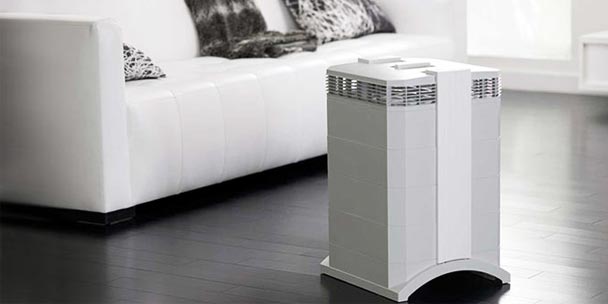Indoor air is home to different particles, such as pet dander, dust, and pollen that may trigger allergies. Also, harmful pathogens, which include fungi, bacteria, and viruses, can be found in indoor air.
When people talk about improving indoor air quality, the first thing that comes to mind is air cleaners or air purifiers. Among air cleaners in the market, a HEPA air purifier is considered the most puzzling. This article will talk about HEPA air purifiers and the frequently asked questions about them.

What are HEPA Air Purifiers?
According to an article by Coway Mega, high-efficiency particulate air or high-efficiency particulate arrestance, known as HEPA, is a type of air filter. A HEPA air filter can remove 99.95% per cent of particles in the air, which is equal to or greater than 0.3 microns. The HEPA filter is usually made from interlaced synthetic and glass fibres.
A HEPA air filter can remove different types of particles such as dust, pollen from flowers, and dander from household pets, to name a few. A HEPA air purifier is an air cleaner that uses a HEPA filter as its main component for improving indoor air quality.
How does a HEPA Air Purifier Work?
Air purifiers with HEPA filters improve air quality indoors through five stages, including the following:
Sucking of Air: During this stage, indoor air polluted by contaminants and harmful particles gets sucked inside the air purifier until the air reaches the HEPA filter.
Impaction: When contaminated air reaches the HEPA filter, large particles such as dust, pet dander, and pollen collide with the synthetic and glass fibres of the filter and stick to it.
Sieving: Once particles are stuck on the fibre, the airstream pushes these particles, so they are entangled and become particles of lesser size.
Interception: Lesser-sized particles are broken down into smaller particles and further filtered out by the HEPA filter’s microscopic fibres.
Diffusion: The large particles are now small and stuck on the fibres of the HEPA filter. Air is now decontaminated and pushed out of the air purifier machine. This leads to an improvement in indoor air quality because the air now has lesser harmful particles.
Will HEPA Air Purifiers Remove Unpleasant Odours?
Different chemicals may cause unpleasant odours inside your home. These chemicals may be organic or inorganic compounds, such as varnishes, caulks, paint coatings, and hygiene products. HEPA air purifiers are the perfect solution for this problem because they can easily filter out chemical particles indoors.
However, if you want to filter out more chemicals indoors, you need to invest in a HEPA air cleaner with a component of an activated carbon filter. This is because a carbon filter can remove volatile organic compounds (VOCs) that can be hazardous to your loved ones’ health. If you want a safer household, then investing in this air cleaner is a must.
Are HEPA Air Purifiers Hard to Operate?
A common misconception regarding HEPA air purifiers is that they are hard to use; this is not true. Due to air purifier technology advancement, air cleaners nowadays are quite easy to use and operate. You simply plug in the machine, and the controls are intuitive so that you won’t have any difficulty operating the air purifier.
Also, the filters can be wiped or vacuumed to remove trapped particles and for cleaning purposes. The air purifier can easily be opened if you want to replace the filters and use a different one.
HEPA air purifiers have numerous positive customer reviews and are among the most purchased air cleaners today. This is because of their high-quality performance, exceptional design, and efficient features.
Leave a Reply